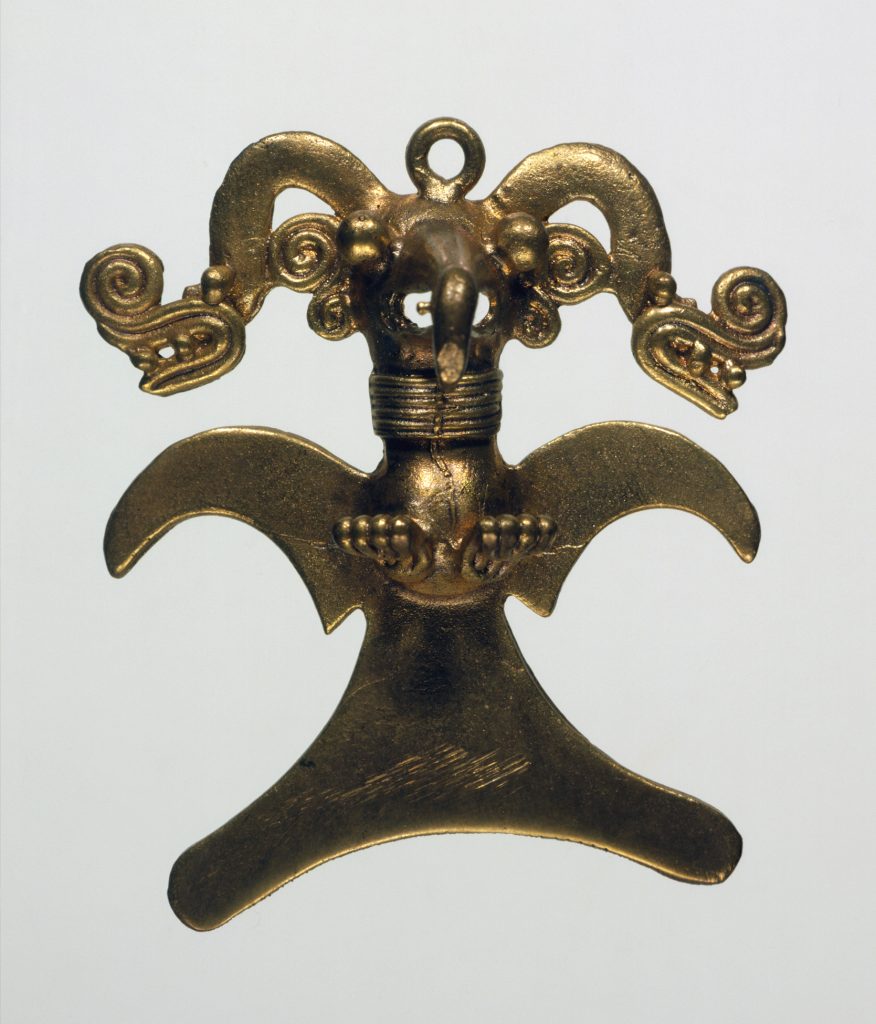Figural Pendant (work of art)
Artwork Info
Key Ideas
- This gold pendant was cast from a mold. It uses simplified shapes to depict an eagle in flight. Its wings and tail are spread wide and its talons are clenched as if it is preparing to attack. The eagle wears a headdress with a double-headed serpent.
- Animals were used to depict divine beings in Mesoamerica and Central America and had ritual significance. They often represented the supernatural beings of the natural world.
- The eagle may wear the serpent headdress to suggest the stages of transformation of a shaman, a person with access to supernatural powers or the spirit world, during ceremonial rituals.
Learn More
This pendant was worn as an emblem of prestige and power. It portrays an eagle that spreads its wings and extends its talons in an attack pose. Note the double-headed serpent emerging from the eagle’s head. Images such as these are thought to depict various stages of the transformation of a shaman, a religious practitioner with magical powers.
tags: fashion, ritual, power, meaning, symbolism, function
Additional Resources
Resources for Teachers
- Read an article about a similar pendant design.
- Learn more about metal work in Costa Rica.
Resources for Students
- Explore animals in art with this resource from the Tate Museum in England.
- Make your own foil pendant.

